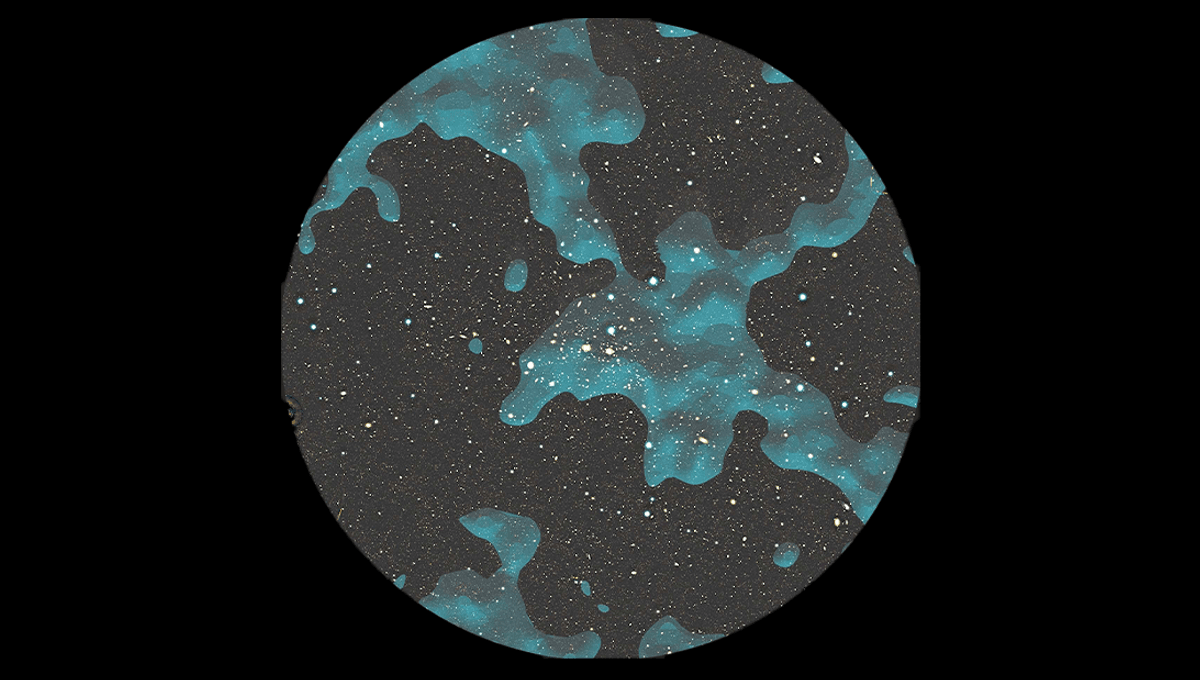
Dark matter has been shown to be concentrated in threads within a spectacular cluster of galaxies popular with amateur astronomers. These filaments explain why the galaxies occupy their locations. The finding shows that, while our models of the universe are facing challenges, they continue to predict many things rather well.
Galaxies are not randomly distributed through space, instead huddling in smallish groups, like the one our own Milky Way is part of, and much larger clusters. These also follow patterns, and according to the concordance cosmological model, they occur where vast filaments that form the cosmic web meet.
Tests of this theory have found evidence to support it when it comes to the ordinary baryonic matter that makes up stars. However, the model predicts these filaments will mostly be made up of dark matter, whose presence is much harder to confirm. After all, we can’t see dark matter – it’s in the name – and don’t even know what it is. Mapping its distribution poses obvious challenges.
These are not insurmountable, however, as a team at South Korea’s Yonsei University claims to have overcome them to the extent of showing these cosmic web filaments also have a dark matter component. Rather than inferring the presence of dark matter from the distribution of sources of light, the team looked for distortions in the light from more distant objects, indicating distortions in spacetime.
Such bending of the fabric of the universe can only be done, as far as we know, by immense gravitational forces. We can see this happening from massive objects that we can see, and the gravity from dark matter should do the same.
The Yonsei team turned the Subaru Telescope on the Coma cluster, which despite being 320 million light years away, is so luminous its brightest galaxies draw backyard telescopes to observe the Coma Berenices constellation. They found the cluster is affecting light from more distant sources far more than the galaxies within it – even including their associated dark matter – could account for.
Some concentration of mass lies between the galaxies, and if the models are right, it should lie along so-called intracluster filaments (ICFs). A statement from the Subaru Telescope describes the ICFs as the “terminal ends of dark matter filaments” that stretch across millions of light years.
There’s also a history to the choice of the Coma Cluster. In 1933, Fritz Zwicky reported the speed with which the galaxies in the Coma Cluster were moving was so great, that it would take a staggering amount of mass to hold them together. More mass, Zwicky showed, than the visible component of these galaxies would provide, indicating there must be something more, which was eventually named dark matter. Although dark matter’s existence had been proposed before, and was not generally accepted until decades later based on galactic rotation rates, Zwicky is now considered a pioneer on this topic.
The authors mapped the distribution of mass within the cluster by where the distortions in more distant light are most extreme, a process known as “weak lensing”. They compared the locations of peaks in the mass with predictions of where these filaments should lie.
What the authors call the northern ICF matched expectations well, although the paper announcing the result notes the western one is “at the low end of the distribution.”
The ICFs are also much more densely packed with mass than their surrounds – 67 and 33 times the background density, respectively – the authors report. Together, the findings indicate that a substantial fraction of the Coma Cluster’s mass is contained in ICFs running through it.
Besides providing further evidence for the existence of dark matter, something accepted by the vast majority of astronomers, the work indicates our understanding of its distribution is on the right track.
On the other hand, since these ICFs are not visible when we merely count galaxies and measure their brightness, the authors suggest cluster masses are probably being underestimated.
The study is published in Nature Astronomy.
Source Link: Cosmic Web's Dark Matter Strands Revealed For The First Time